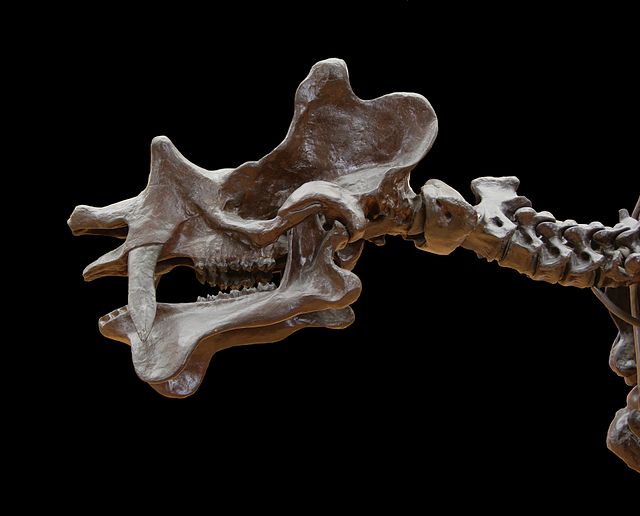The Oligocene is a geologic epoch of the Paleogene Period and extends from about 33.9 million to 23 million years before the present. As with other older geologic periods, the rock beds that define the epoch are well identified but the exact dates of the start and end of the epoch are slightly uncertain. The name Oligocene was coined in 1854 by the German paleontologist Heinrich Ernst Beyrich from his studies of marine beds in Belgium and Germany. The name comes from the Ancient Greek ὀλίγος and καινός, and refers to the sparsity of extant forms of molluscs. The Oligocene is preceded by the Eocene Epoch and is followed by the Miocene Epoch. The Oligocene is the third and final epoch of the Paleogene Period.
Subdivisions of the Oligocene
Neotethys during the Oligocene (Rupelian, 33.9–28.4 mya)
Restoration of Nimravus (far left) and other animals from the Turtle Cove Formation
Life restoration of Daeodon
The Eocene is a geological epoch that lasted from about 56 to 33.9 million years ago (Ma). It is the second epoch of the Paleogene Period in the modern Cenozoic Era. The name Eocene comes from the Ancient Greek ἠώς and καινός and refers to the "dawn" of modern ('new') fauna that appeared during the epoch.
Cast of Uintatherium anceps skull, French National Museum of Natural History, Paris
Reconstruction of Andrewsarchus, Dinosaurier Museum Altmühltal, Germany
Primobucco, an early relative of the roller
Moeritherium








